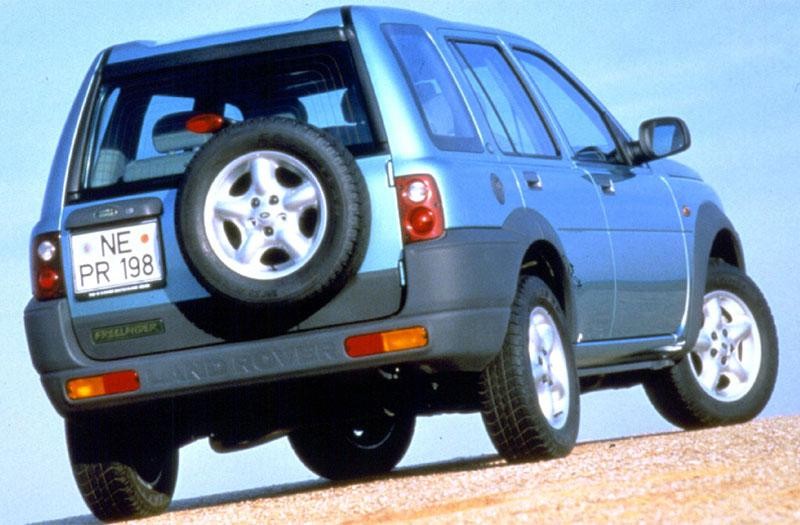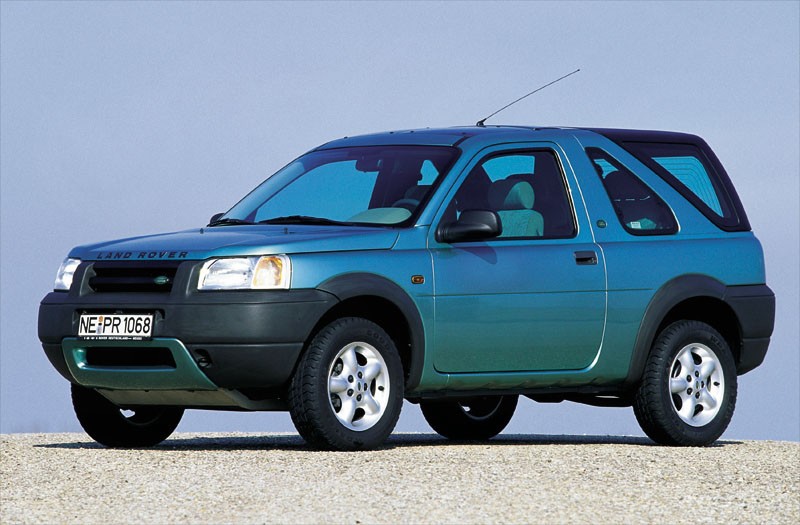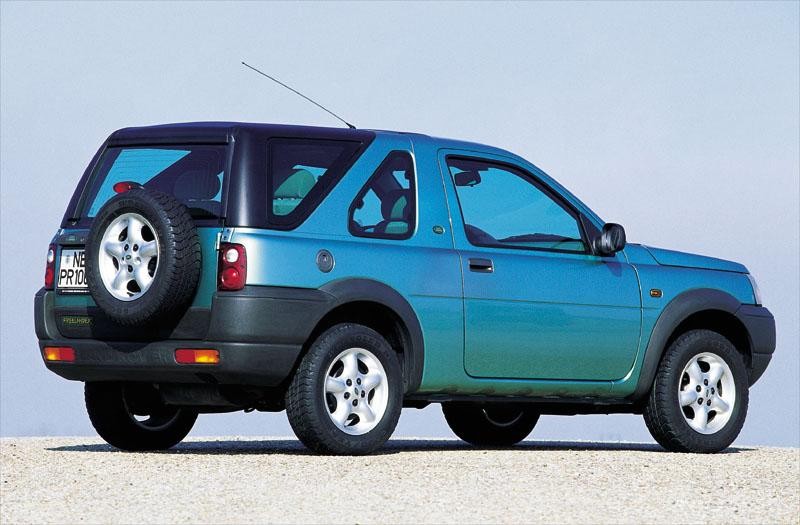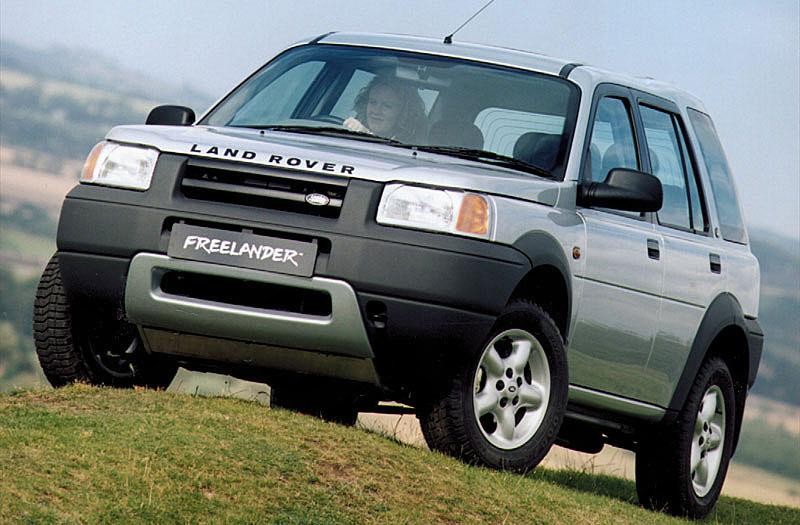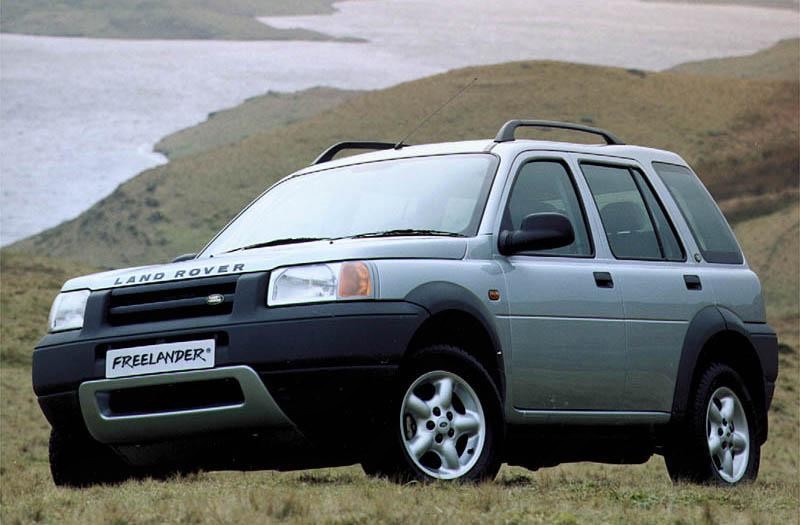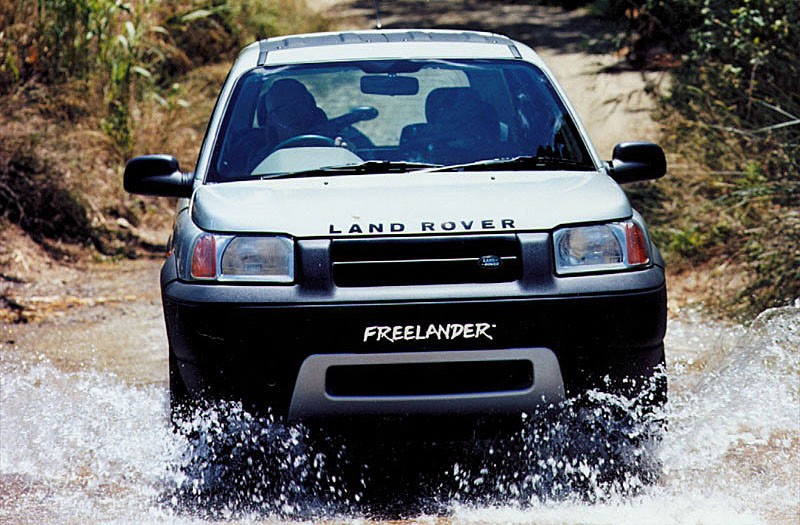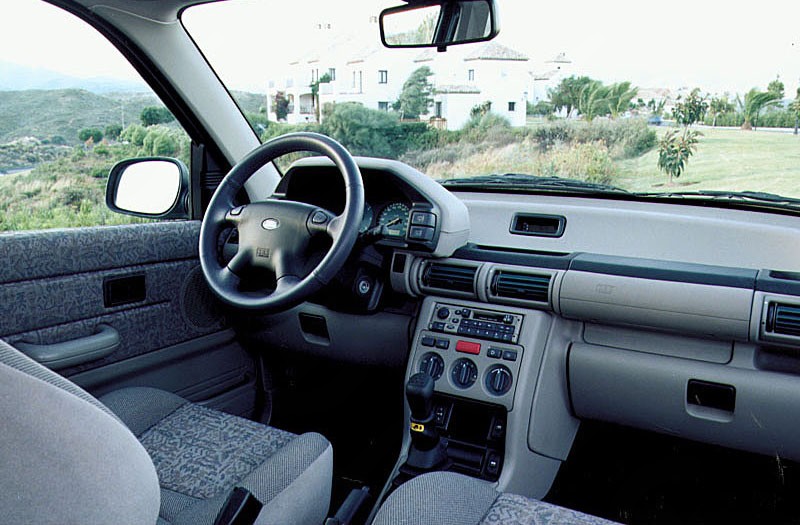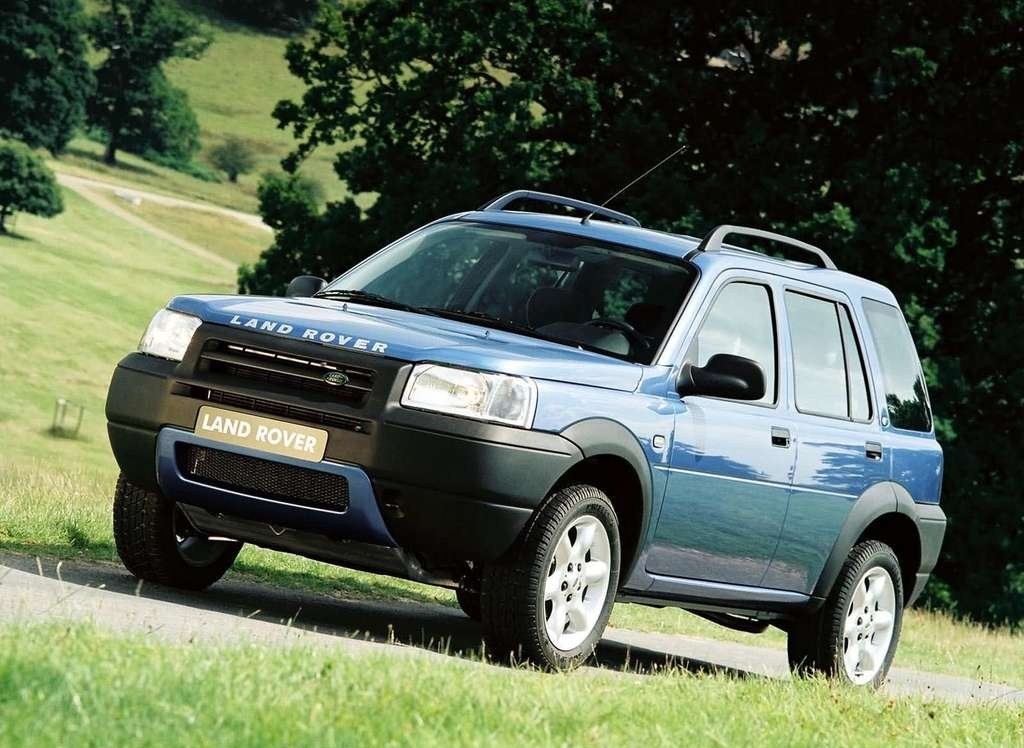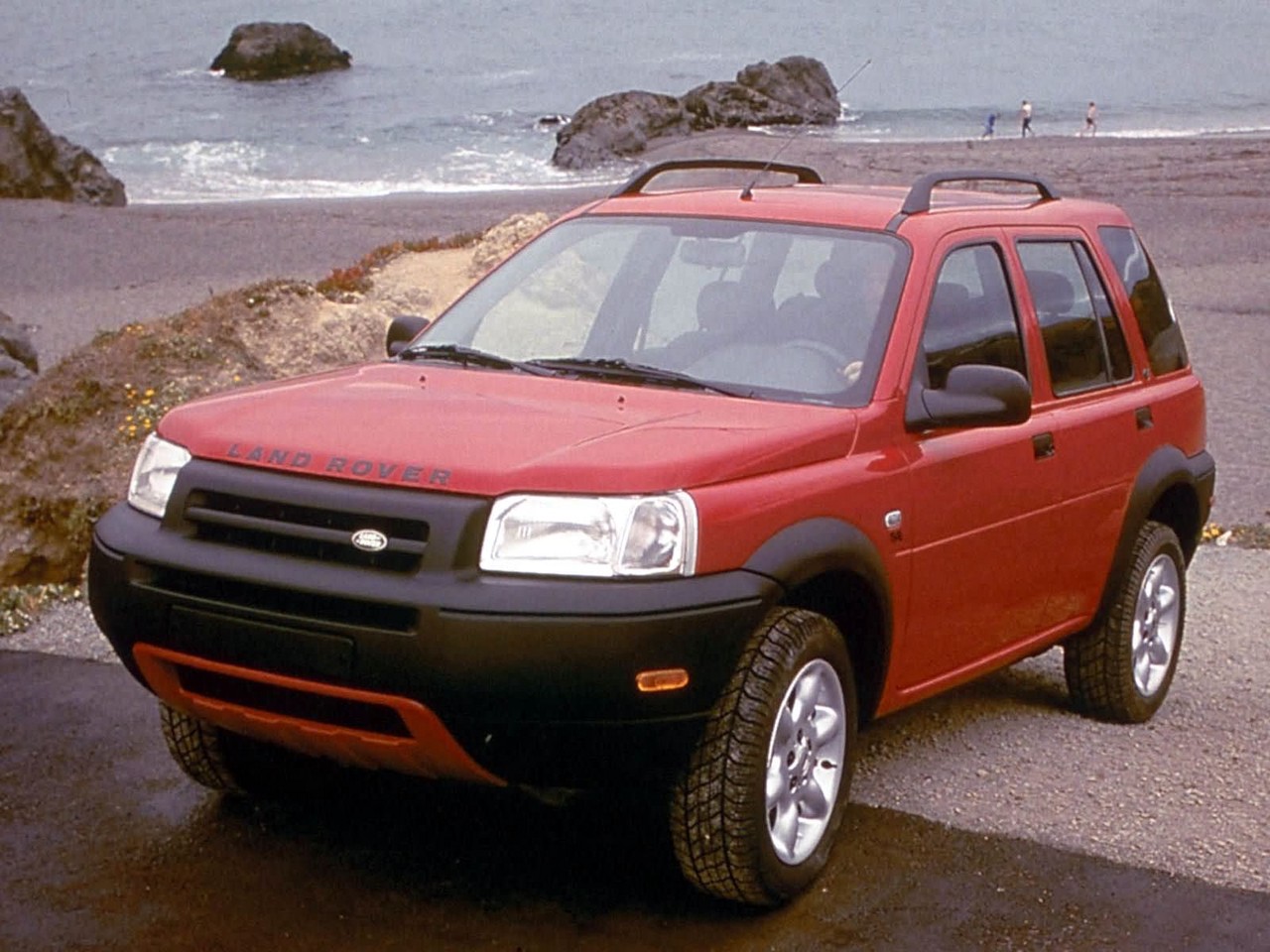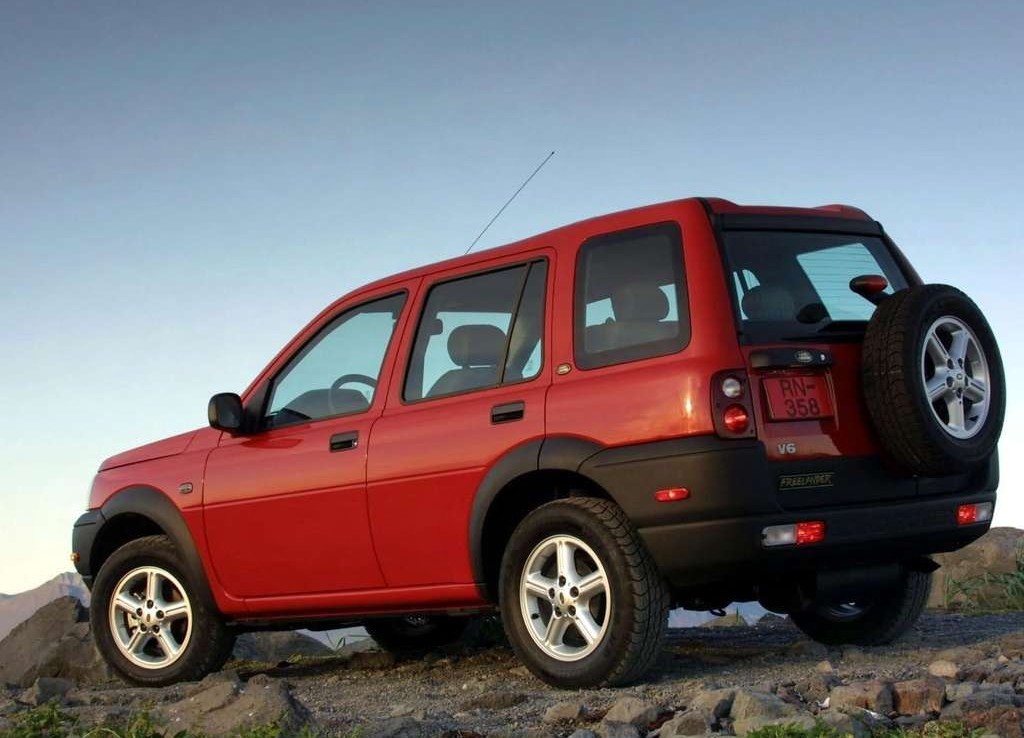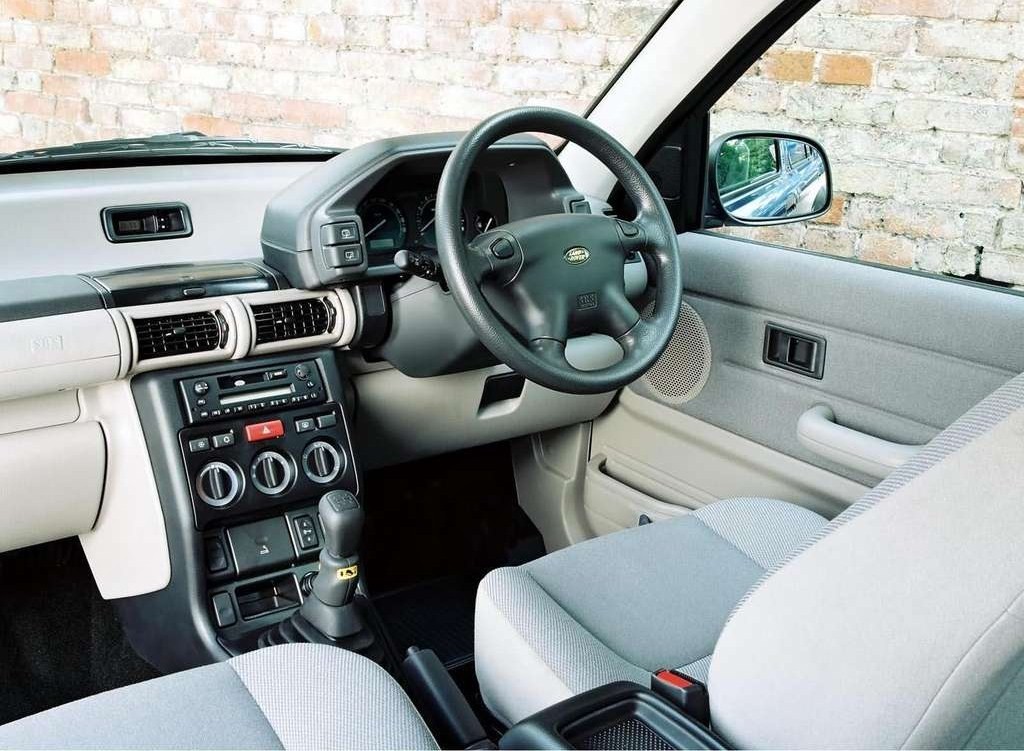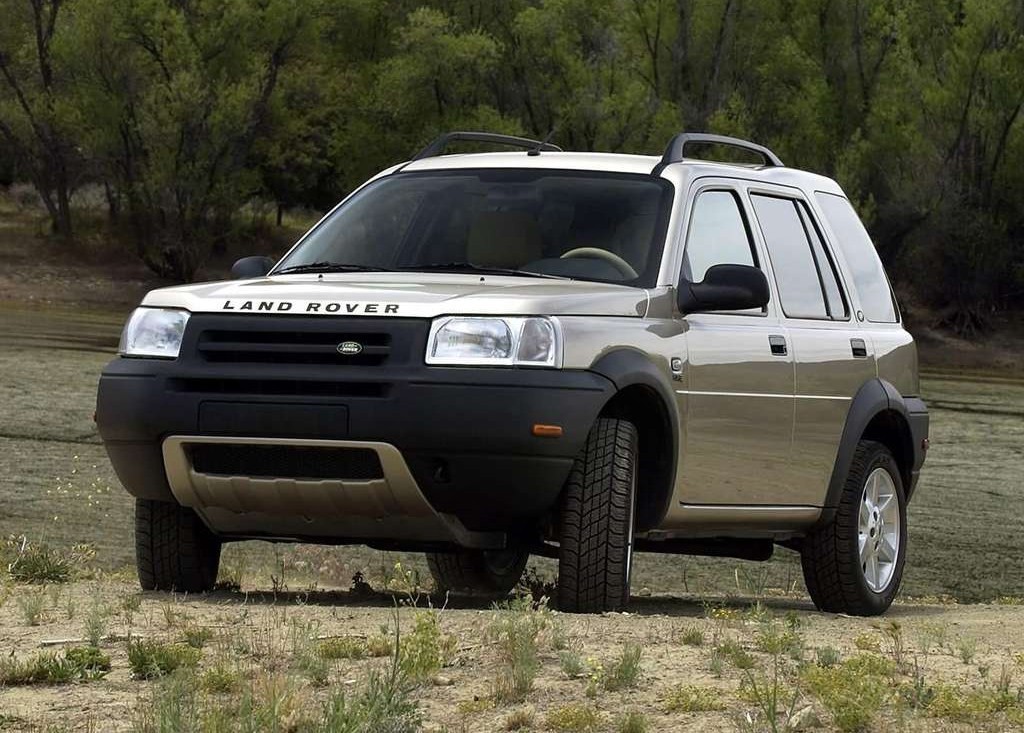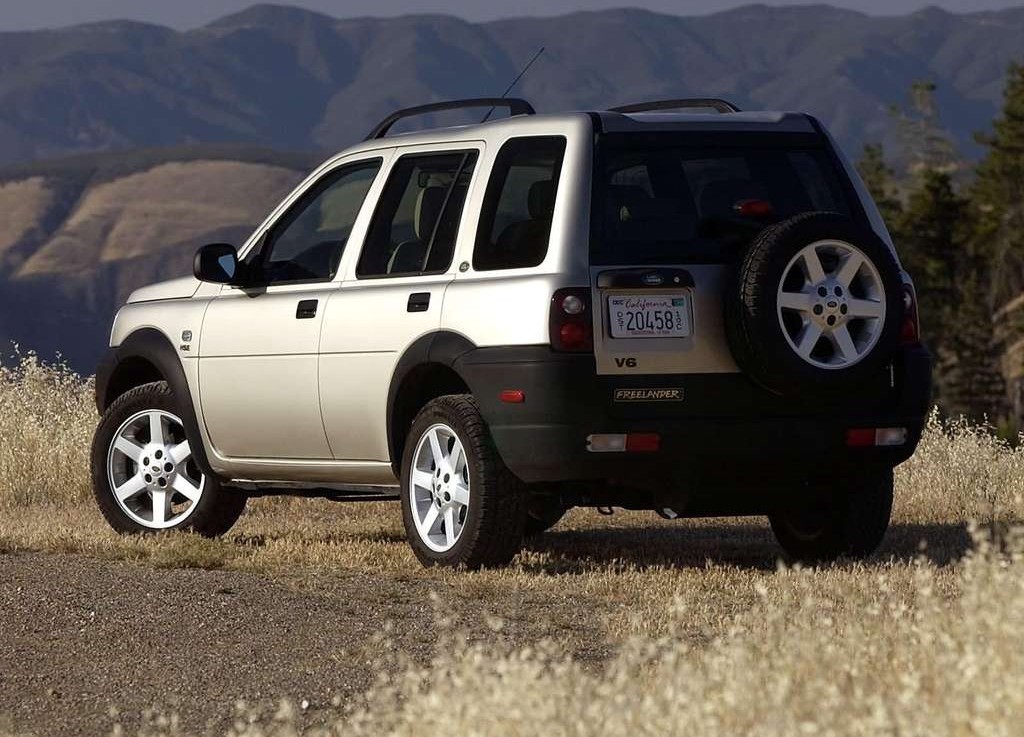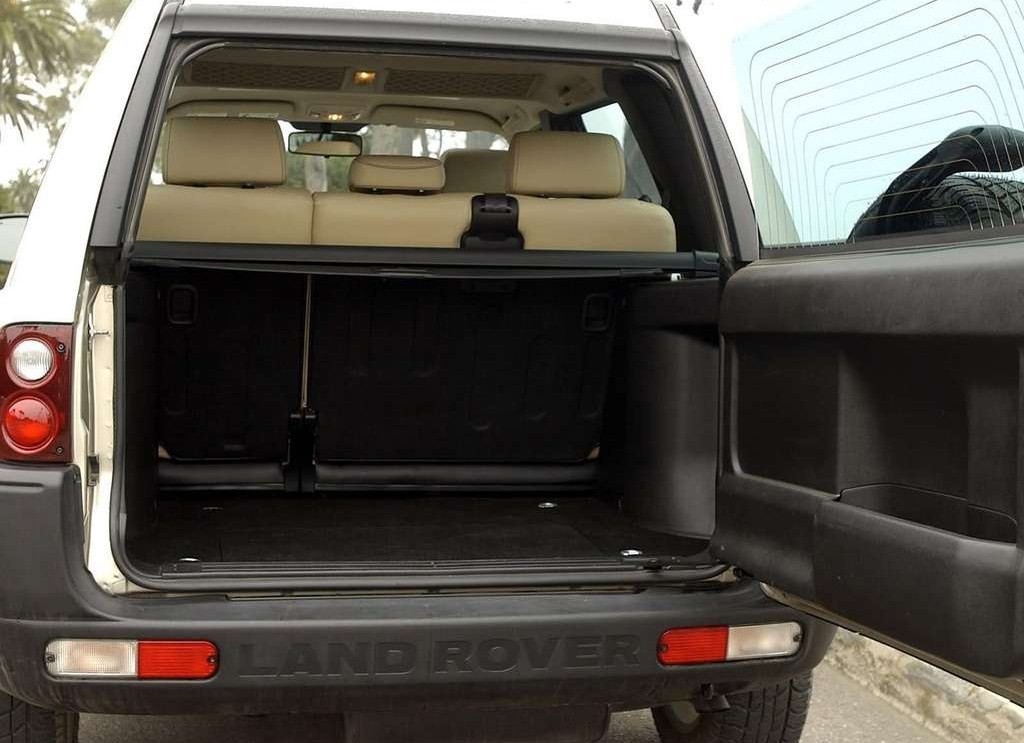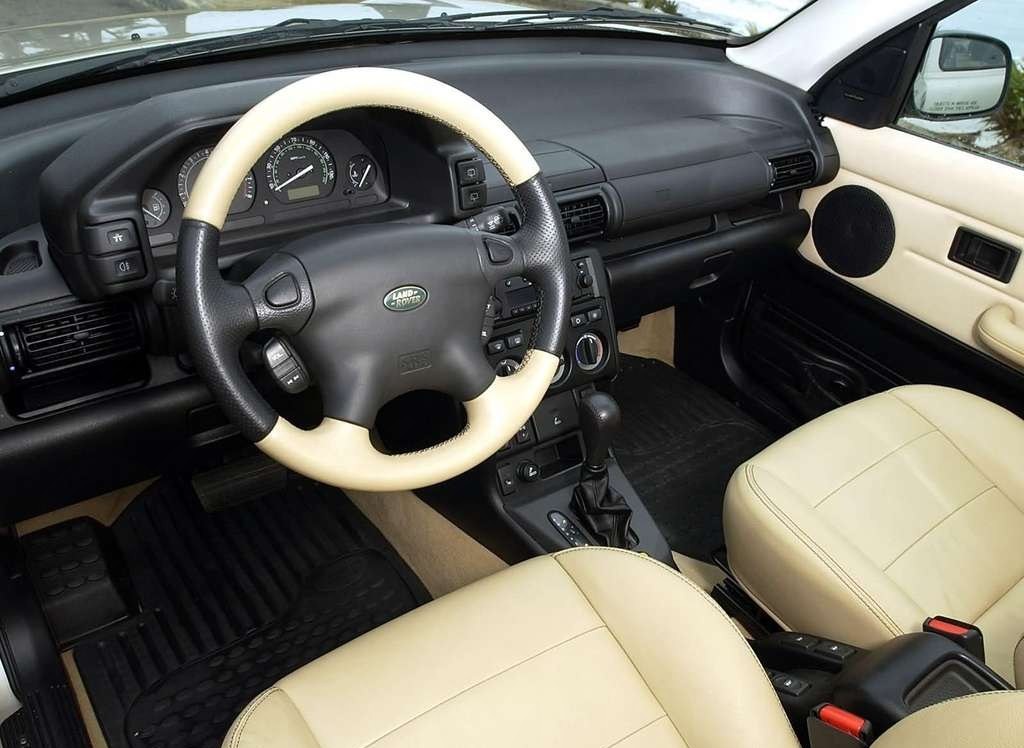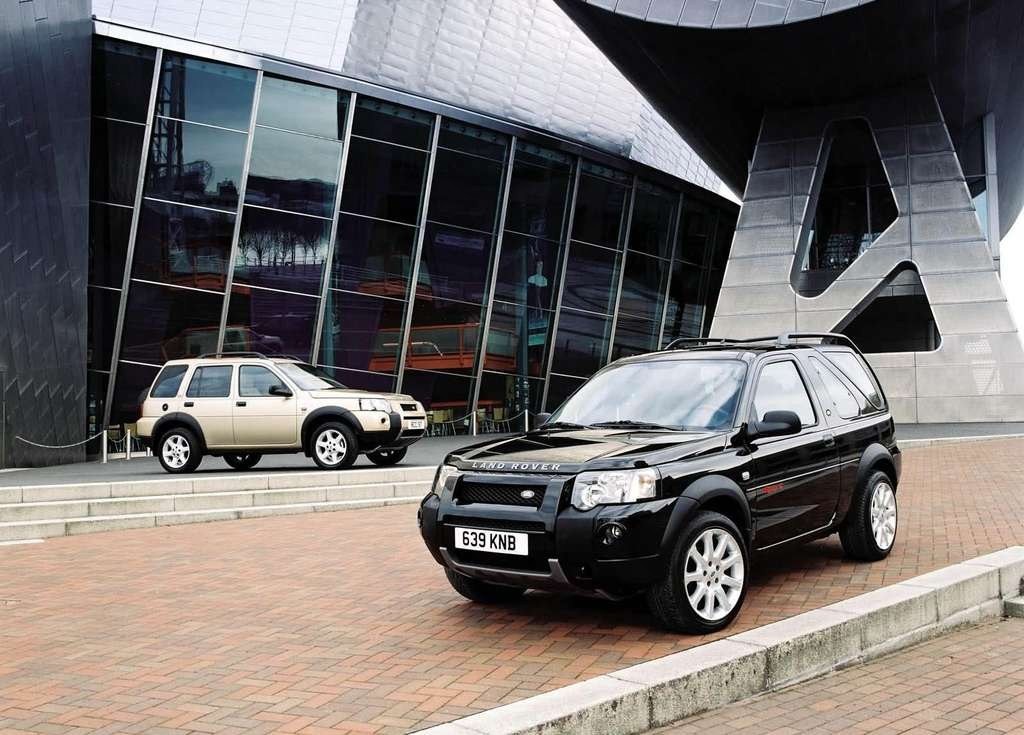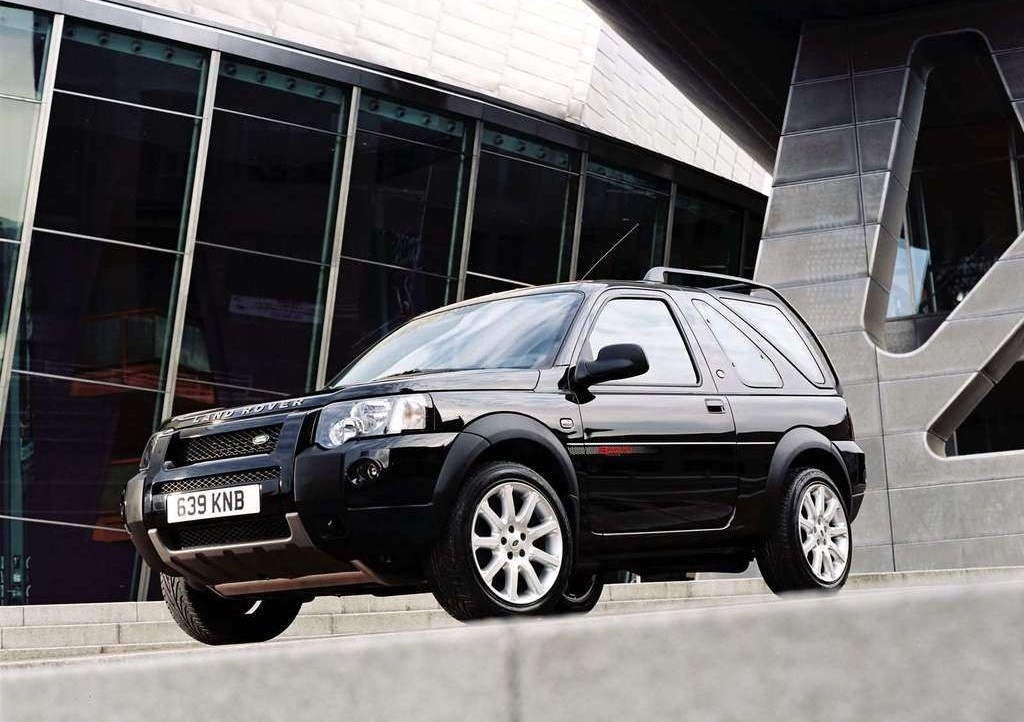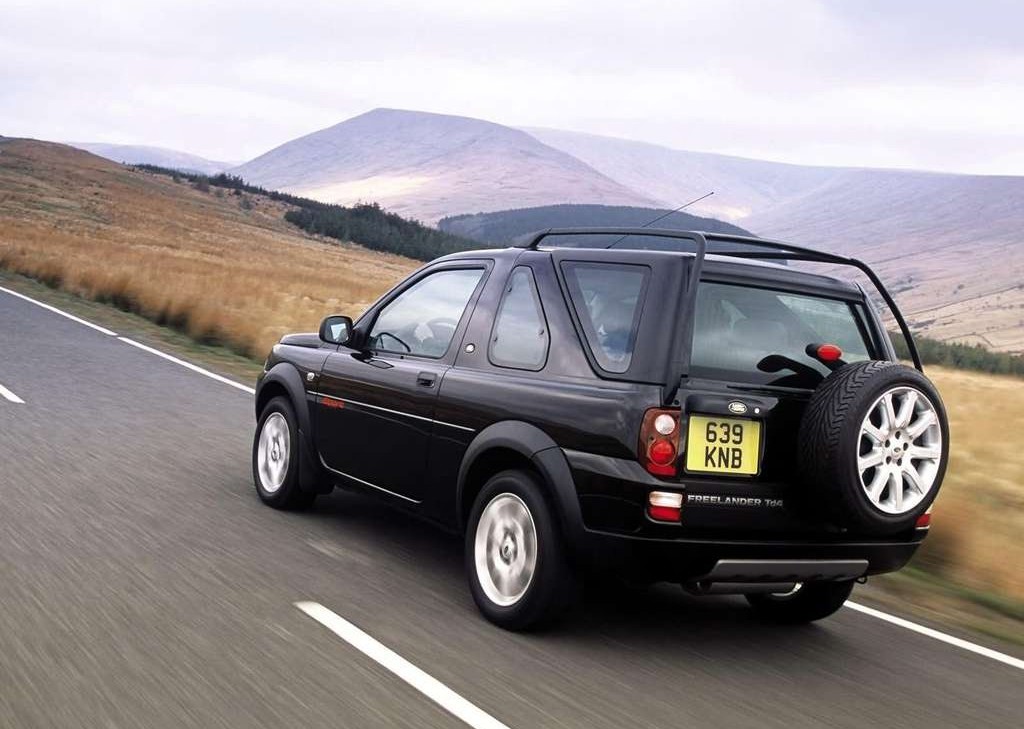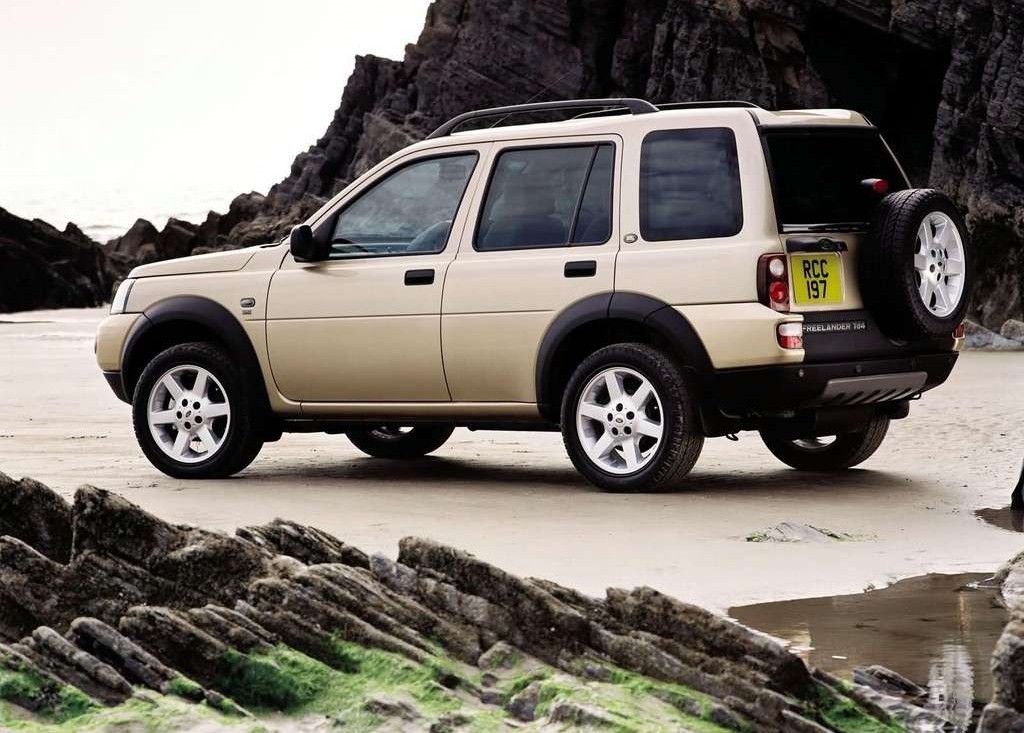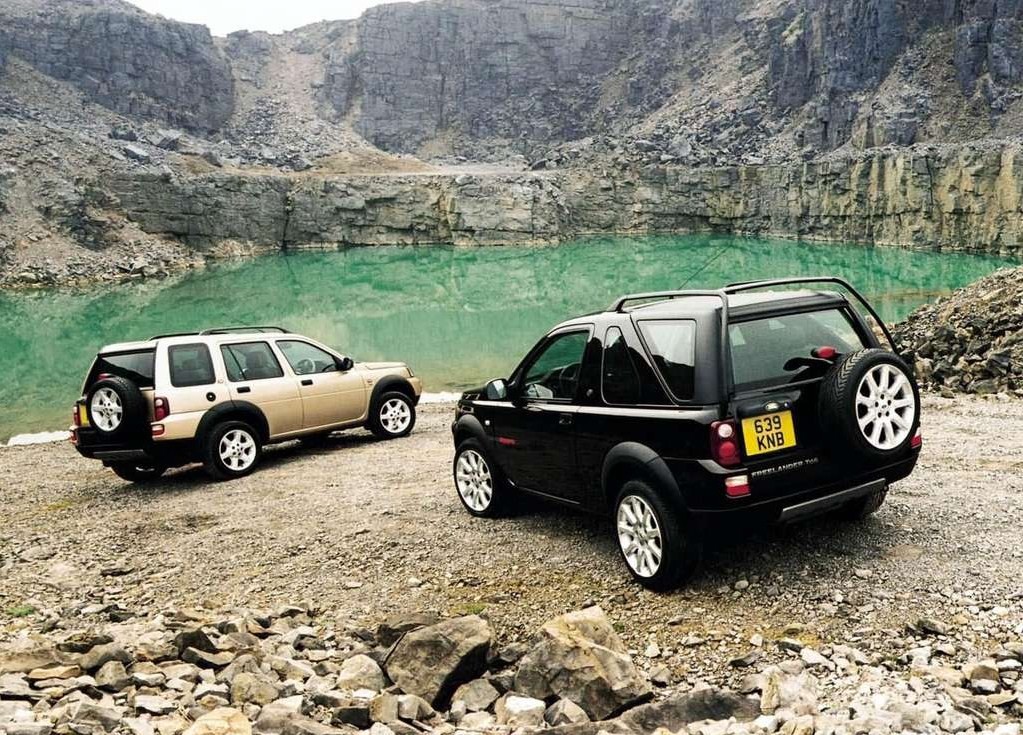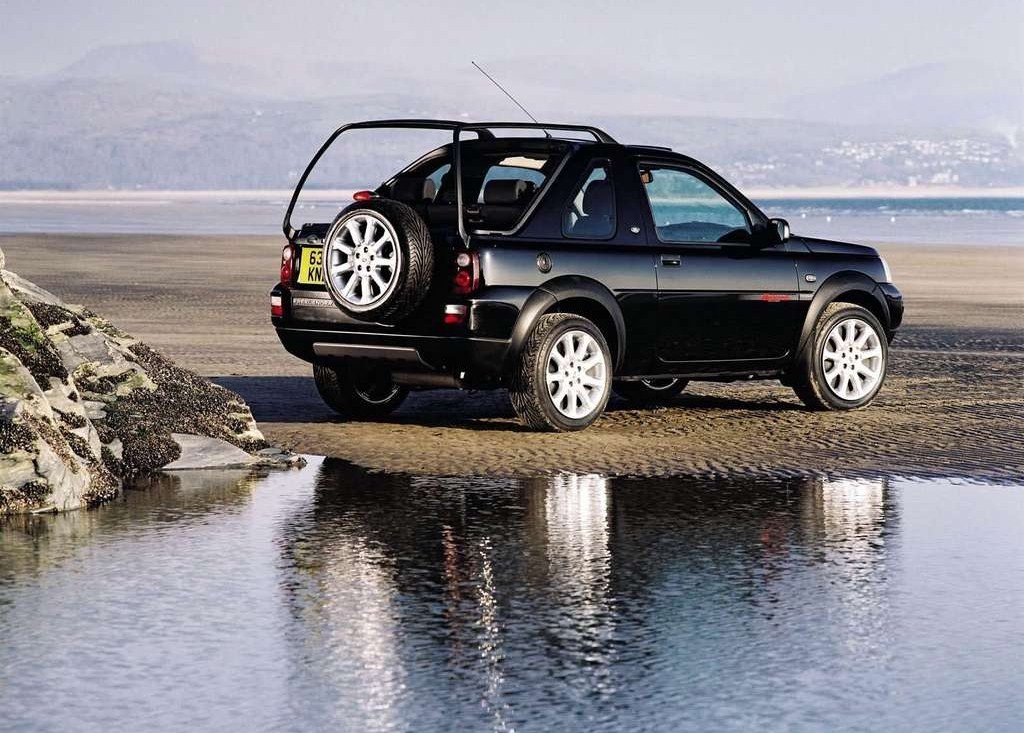
- Frugal 2.0-litre BMW turbo-diesel engine
- Spacious and comfortable interior
- Comfortable ride
- Some off-road ability
- Head gasket failure for 1.8- and 2.5-litre petrol engines
- Suspension lacks body control
- Space needed to open side-hinged tailgate
- Large turning circle
Review: Land Rover L314.I Freelander (1998-00)
Overview
Released in February 1998, the Land Rover L314 Series I (L314.I) Freelander was available as a five-door wagon, a three-door ‘Hardback’ or a three-door ‘Softback’, the latter of which was fitted with a removable soft-top rear roof beyond the B-pillar.
The Freelander was available with a 1.8-litre Rover K-Series four-cylinder petrol engine (the ‘I’ and ‘XEi’ variants) or a 2.0-litre turbo-diesel unit (the ‘di’ and ‘XEdi’ variants); both engines were mated to five-speed manual transmissions. Furthermore, the Freelander had independent front and rear suspension with MacPherson struts and coil springs.
| Body | Variants | Engine | Trans. | Peak power | Peak torque |
|---|---|---|---|---|---|
| 3dr Hardback | i | 1.8-litre petrol I4 | 5sp man. | 84 kW at 6000 rpm | 158 Nm at 2750 rpm |
| 3dr Softback | i, XEi |
1.8-litre petrol I4 | 5sp man. | 84 kW at 6000 rpm | 158 Nm at 2750 rpm |
| 5dr wagon | i, XEi |
1.8-litre petrol I4 | 5sp man. | 84 kW at 6000 rpm | 158 Nm at 2750 rpm |
| di, XEdi |
2.0-litre turbo-diesel I4 | 5sp man. | 72kw at 4200 rpm | 210 Nm at 2000 rpm |
AWD system
The Freelander’s all-wheel drive system utilised a viscous coupling. As such, drive was predominantly directed to the front wheels in normal conditions. In the event that the front wheels lost traction, the silicone within the coupling would become increasingly viscous, thereby engaging the rear driveshaft and transferring torque to the rear wheels. Furthermore, the Freelander was fitted with an Intermediate Reduction Drive (IRD) unit – mounted to the transmission – which could reduce the gear ratios by a factor of 1.458 and supply drive to the front and rear axles. This rear axle drive went through a propshaft to the viscous coupling unit, then through a second in-line propshaft to the rear axle differential.
The XEi and XEdi variants were also fitted with a hill descent control system which operated in first and reverse gears – the system would automatically brake the wheels when sensors detected a loss of traction.
Safety equipment
Standard safety equipment for the i and di variants included dual front airbags and front seatbelts with pretensioners and load limiters. The XEi and XEdi variants were further equipped with ABS and traction control.
Euro NCAP crash testing
In Euro NCAP crash testing , a 2002 Freelander – that was fitted with a 1.8-litre petrol engine and equipped with dual front airbags – received a three star adult occupant protection rating with a score of 20. In the frontal offset impact test, the cabin became structurally unstable as the driver’s door buckles and the windscreen pillar moved backwards significantly. For the driver, chest protection was rated as weak, foot protection as poor and thigh protection as marginal due to the risk posed by hard points behind the fascia. In the side impact, chest protection for the driver was marginal.
Features
Standard features for the Freelander i included a four speaker sound system with a radio and cassette player, 60/40 split and double folding rear seats, remote central locking, power windows and heated mirrors, a height adjustable steering wheel, an alarm and immobiliser.
The Freelander XEi and XEdi variants were further equipped with 15-inch alloy wheels with locking wheel nuts, a six speaker sound system and roof racks.
Review: Land Rover L314.II Freelander (2000-03)
Overview
Released in November 2000, the L314 Series II (L314.II) Freelander introduced new powertrains and visual updates. As such, the L314.II Freelander was available with either a 2.5-litre Rover K-Series V6 petrol engine or a BMW-sourced 2.0-litre M47 turbo-diesel unit; both engines were available with a BMW-supplied five-speed automatic transmission with sequential shift function.
Visually, the L314.II Freelander could be identified by its extended front bumper and grille. Inside, there was a new centre console and the switchgear was repositioned for improved ergonomics.
| Body | Variant | Editions | Years | Engine | Trans. | Peak power | Peak torque |
|---|---|---|---|---|---|---|---|
| 3dr Hardback | V6 | SE, ES |
2000-02 | 2.5-litre petrol V6 |
5sp auto | 130 kW at 6500 rpm | 240 Nm at 4000 rpm |
| 3dr Softback | V6 | SE, ES |
2000-03 | 2.5-litre petrol V6 |
5sp auto | 130 kW at 6500 rpm | 240 Nm at 4000 rpm |
| 5dr wagon |
V6 | SE, ES |
2000-03 | 2.5-litre petrol V6 |
5sp auto | 130 kW at 6500 rpm | 240 Nm at 4000 rpm |
| HSE | 2003 | ||||||
| Td4 | SE | 2000-03 | 2.0-litre turbo-diesel I4 | 5sp man., 5sp auto |
82 kW at 4000 rpm | 260 Nm at 1750-4000 rpm | |
| ES | 2003 | 2.0-litre turbo-diesel I4 | 5sp auto | 82 kW at 4000 rpm | 260 Nm at 1750-4000 rpm |
Safety equipment
Standard safety equipment for the L314.II Freelander included dual front airbags, ABS, electronic brake force distribution, traction control and front seatbelts with pretensioners and load limiters.
Features
Standard features for the Freelander SE included alloy wheels (15-inch for V6 variants and 16-inch for Td4 variants), a six speaker sound system with a six-disc CD changer, air conditioning, 60/40 split and double folding rear seats, remote central locking, power windows and heated mirrors, a height adjustable steering wheel, an alarm and immobiliser; models with automatic transmissions were also fitted with cruise control.
From July 2002, however, the six-disc CD changer was omitted from the SE and reserved for the ES editions.
Compared to the SE, the Freelander ES was further equipped with 16-inch alloy wheels, leather seats and a leather-wrapped steering wheel.
Freelander Action Pack
From July 2002 to December 2002, the Freelander was available with an optional ‘Action Pack’ which included a bike carrier, roof racks and rails, a floor mat set, integrated nudge bar with chrome inserts, front and rear lamp guards, a spare wheel cover and side rubbing strips.
Freelander HSE edition
In July 2003, the five-door V6 variant was released in an HSE edition. Compared to the ES, the HSE edition was further equipped with 171-inch alloy wheels with 225/55 tyres, a Harman/Kardon six speaker sound system, Alpaca leather trim and a sunroof (with tilt and slide operation).
Review: Land Rover L314.III Freelander (2004-06)
Overview
Released in March 2004, the L314 Series III (L314.III) Freelander introduced a revised range and cosmetic updates. The L314.III Freelander was solely available with a 2.0-litre turbo-diesel engine and the five door wagon models were available in S, SE and HSE editions. The three-door Freelander had a soft-top rear roof section and a detachable hardback and was available in a single, unnamed edition.
Visually, the L314.III Freelander could be identified by its twin pocket-style headlights, new tail-lights, mesh grilles and body-coloured bumpers. Significantly, the new headlights provided 70 per cent greater light intensity; the tail-lights were also repositioned higher on the rear bumper. Inside, there were new front seats with greater thigh support, a new dashboard with revised instrumentation, repositioned switches and, for wagon models, the door trims also contained the power window switches. A new rear seat latching mechanism was also introduced.
| Body | Variant | Editions | Engine | Trans. | Peak power | Peak torque |
|---|---|---|---|---|---|---|
| 3dr | Td4 | N/A | 2.0-litre turbo-diesel I4 | 5sp auto | 82 kW at 4000 rpm | 260 Nm at 1750-4000 rpm |
| 5dr | Td4 | S | 2.0-litre turbo-diesel I4 | 5sp man., 5sp auto |
82 kW at 4000 rpm | 260 Nm at 1750-4000 rpm |
| SE, HSE |
2.0-litre turbo-diesel I4 | 5sp auto | 82 kW at 4000 rpm | 260 Nm at 1750-4000 rpm |
Safety equipment
Compared to its L314.II predecessor, standard safety equipment for the L314.III Freelander was unchanged.
Features
Standard features for the Freelander S included 15-inch alloy wheels, a six speaker sound system with a CD player, air conditioning, cruise control, 60/40 split and folding double-folding rear seats, remote central locking, power windows and heated mirrors, a height adjustable steering wheel, roof rails, an alarm and immobiliser. The three-door models were further equipped with 17-inch alloy wheels and an eight speaker sound system with a six-disc CD changer.
Compared to the Hardback, the Freelander SE was fitted with 16-inch alloy wheels, but added heated front seats, leather-wrapped gear shift and a front skid plate.
The range-topping Freelander HSE was distinguished by its an eight speaker Harman/Kardon sound system with subwoofer, leather seats, rear parking sensors and power folding mirrors.
Related links
